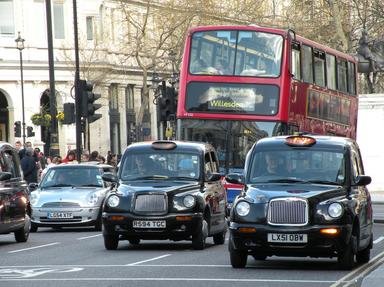Quiz Answer Key and Fun Facts
1. The signature grille installed on Rolls-Royce motor cars has three features. Which of the following is NOT one of them?
2. The Triumph Spitfire was a fun little sports car produced from 1962 to 1980. Which of the following is NOT true about the Spitfire?
3. William Morris, the founder of Morris Garages which was the namesake of the MG brand, is credited as being a pioneer in the UK for which manufacturing technique first introduced in the US by Henry Ford?
4. The original Land Rover was a British version of the US military jeep developed for the British military to use during World War II.
5. Colin Chapman, who famously said, "Adding power makes you faster on the straights. Subtracting weight makes you faster everywhere", was the founder of which sports car company?
6. Skirts weren't the only thing short in Britain in the 1960s. Which iconic British motor vehicle was designed by Sir Alec Issigonis?
7. In the film "Goldfinger", James Bond immortalized the DB5 as the ultimate 'Bond' car. Which company manufactured this legendary beauty?
8. Which British car developers, although not contemporaries, lent their names to a joint venture car manufacturing company in 1952?
9. The name 'Jaguar' is synonymous with stylish British sports cars. However, under what, perhaps surprising, name did the company start business in 1922?
10. McLaren may be better known for their highly successful racing team, but they also make production road cars. Their first foray into this industry came in 1992 with the launch of which aptly named three-seater sports car?
Source: Author
MikeMaster99
This quiz was reviewed by FunTrivia editor
trident before going online.
Any errors found in FunTrivia content are routinely corrected through our feedback system.
